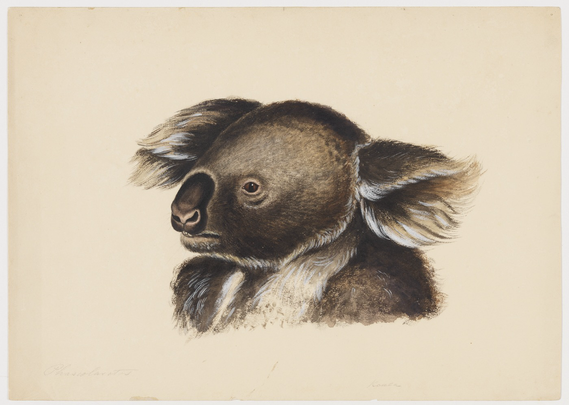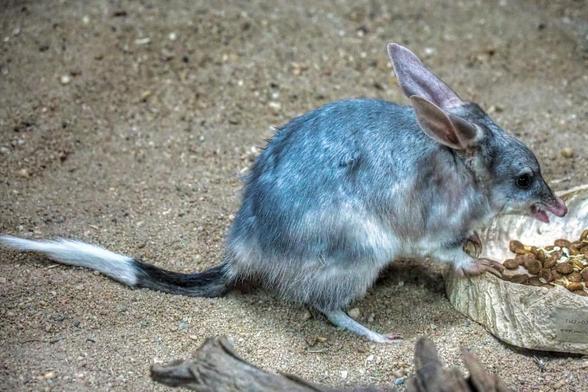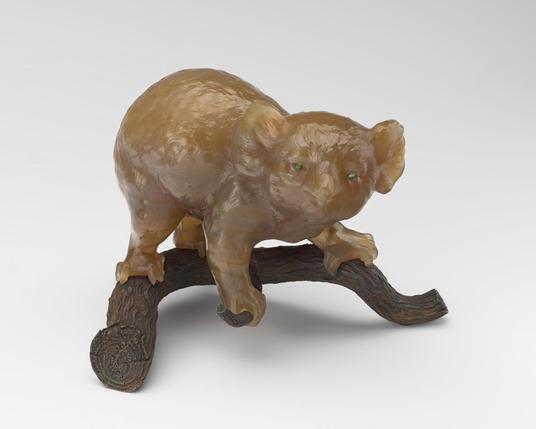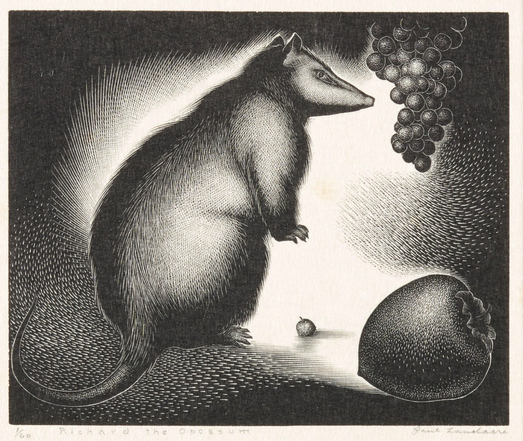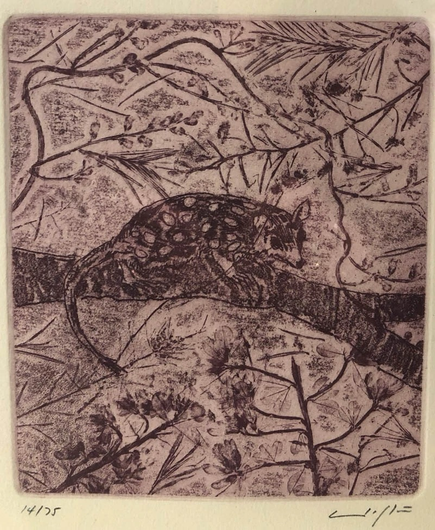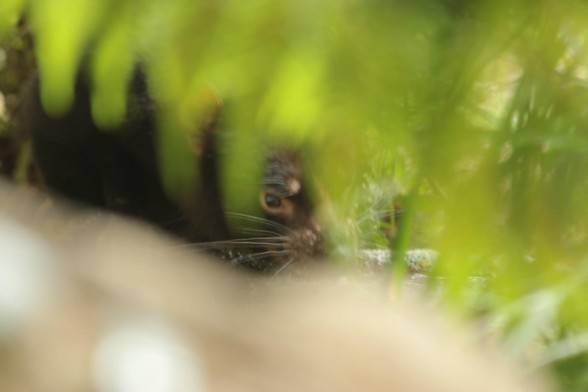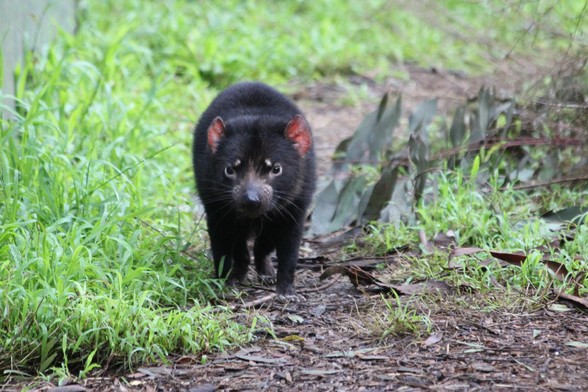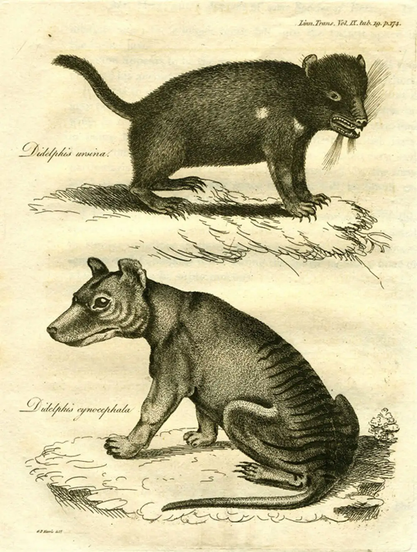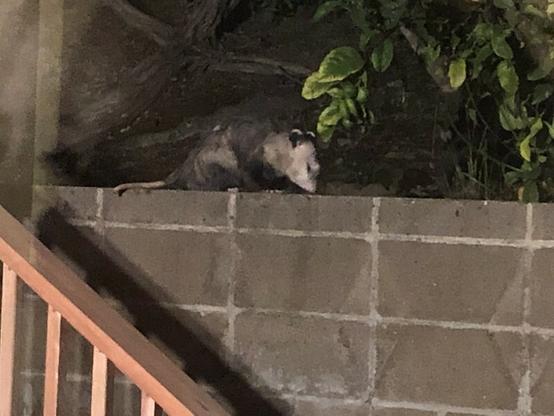#MarsupialMonday :
Watercolor studies of “Phascolarctos or Native Bear” (#Koala ) by James Stuart, c.1831-41.
The State Library of New South Wales Mitchell Library:
https://collection.sl.nsw.gov.au/record/nM7lDMLY
[Volume 04: Natural history drawings of marsupials, reptiles and rodents, ca. 1831-1841 / by James Stuart / Linnean Society of N.S.W. collection.]
#MarsupialMonday
Bilby, Bilby Experience, Charleville, QLD, 2018 #MarsupialMonday #NaturePhotography
#MarsupialMonday :
John Breckinridge Martin
(USA, 1857-1938)
Possum, 1910
Pastel, 19 1/2 × 16 in. (49.53 × 40.64 cm)
Dallas Museum of Art 1950.95
https://www.dma.org/art/collection/object/5045717
#Opossum
#MarsupialMonday :
#Koala , c. 1913
Henrik Immanuel Wigström (1862-1923) (workmaster)
Fabergé (jeweller)
Agate, demantoid garnets, silver | 6.6 x 8.2 x 7.3 cm
Bought by King George V from Fabergé's London branch, 13 November 1913
Royal Collection Trust RCIN 40407 https://www.rct.uk/collection/search#/4/collection/40407/koala-bear
#ManuscriptMonday + #MarsupialMonday :
#Opossum characters are found in several Mesoamerican codices; here is an amazing sequence from the Aztec Codex Fejérváry-Mayer of an opossum warrior-god performing a ritual decapitation:
http://www.famsi.org/research/graz/fejervary_mayer/ (original now in National Museums Liverpool)
#ManuscriptMonday + #MarsupialMonday:
#Opossum characters are found in several Mesoamerican codices; here is an amazing sequence from the Aztec Codex Fejérváry-Mayer of an opossum warrior-god performing a ritual decapitation:
http://www.famsi.org/research/graz/fejervary_mayer/ (original now in the National Museums Liverpool collection)
#MarsupialMonday + #MonochromeMonday :
Paul Landacre (USA, 1893-1963)
Richard the #Opossum , 1936
Wood engraving on Japan paper
4 3/4 x 5 3/4 in. (12.0 x 14.7 cm)
https://www.bonhams.com/auction/29329/lot/40/paul-landacre-american-1893-1963-richard-the-opossum/
#MarsupialMonday :
#Kangaroo and baby, by Fabergé, c. 1913
Nephrite & rose diamonds
8.8 x 3.1 x 9.7 cm
Royal Collection Trust RCIN 40269
“This humorous carving of a kangaroo and baby was bought by King George V in November 1913 for £23.”
https://www.rct.uk/collection/search#/3/collection/40269/kangaroo-and-baby
#MarsupialMonday :
Walter Inglis Anderson (USA, 1903-1965)
#Opossum , 1984
linoleum block print
from the book An Alphabet [Jackson : University Press of Mississippi, 1984]
#MarsupialMonday :
George Browning (Australia, 1918-2000)
Marsupial Mother [ #Bandicoot ], c.1959
oil on paper on cardboard, 20.0 × 27.4 cm
National Gallery of Victoria 347-5 https://www.ngv.vic.gov.au/explore/collection/work/3449/
#MarsupialMonday:
Charles Culver (USA, 1908-1967)
Possum, n.d.
charcoal & pastel on paper, 12 by 15 1/4 in. (30.5 by 38.8 cm.)
https://www.invaluable.com/auction-lot/charles-culver-1908-1967-77-c-dmgc6ffsqj
#opossum #marsupial
#MarsupialMonday + #monochromemonday :
Clifton Pugh (Australian, 1924-1990)
Feather-Tailed Glider, Long-Tailed Pygmy Possum, and Eastern Quoll, c.1990
soft ground etchings, signed & numbered
#Marsupials
https://www.mutualart.com/Artwork/Feather-Tailed-Glider/61E2D0F5E062D3D9
https://www.mutualart.com/Artwork/Long-Tailed-Pygmy-Possum/E0D04794BC3B448A
https://www.mutualart.com/Artwork/Eastern-Quoll/C2AF9
#MarsupialMonday + #MonotremeMonday pair:
James E Bourhill (British, fl.1880-1887)
1. Red #Kangaroo, 1885
oil on canvas 22½ x 31 in
2. Duck-Billed #Platypus, 1886
oil on canvas 22¼ x 30½ in
https://www.mutualart.com/Artwork/Red-Kangaroo/4C3E659DDD21E9C3
https://www.mutualart.com/Artwork/Duck-Billed-Platypus/AD7747DB3CFF54A3
#monotremes #marsupials #AustralianAnimals
#MarsupialMonday:
Margaret Preston (Australian, 1875-1963)
#Kangaroos Feeding, 1945
Oil on canvas, 40.5 x 40.5 cm
https://www.mutualart.com/Artwork/KANGAROOS-FEEDING/D26FF4F553A3151E
#WomenArtists
There is no use hiding. It’s Monday.
Good news is it’s #MarsupialMonday!
Today we have the always adorable but mysterious & shy Tasmanian devil (Sarcophilus harrisii).
From the Dasyuridae family (who are largely insectivores), they are unique being the largest carnivorous marsupial.
Today is not only #MarsupialMonday, but it's also the inaugural #InternationalTasmanianDevilDay !
Here is the first published image of a Tasmanian Devil (Sarcophilus harrisii) from 1808, initially described as the "Bear Opossum," alongside the first published image of a Thylacine (Thylacinus cynocephalus), similarly described as the "Dog-Headed Opossum" or "Zebra Opossum." Both images are from sketches made in 1806 by George Prideaux Harris, an Assistant Surveyor in Hobart Town.
@webuiltthiscity Saw and thought of you:
#MammalMonday #MarsupialMonday #MonotremeMonday mashup:
"Scene in #Tasmania, with Characteristic Mammalia": #Thylacines, #Bandicoots, #Wombats, and an #Echidna!
Pl.XI in Alfred Russel Wallace's The Geographical Distribution of Animals Vol. 1, 1876; illustration by Johann Baptist Zwecker.
https://archive.org/details/geographicaldist01wall2/page/n503/mode/1up
#biogeography #zoology #naturalhistoryart #sciart #bookart
https://historians.social/@art_history_animalia/110653225754500667
#MammalMonday #MarsupialMonday #MonotremeMonday mashup:
"Scene in #Tasmania, with Characteristic Mammalia": #Thylacines, #Bandicoots, #Wombats, and an #Echidna!
Pl.XI in Alfred Russel Wallace's The Geographical Distribution of Animals Vol. 1, 1876; illustration by Johann Baptist Zwecker.
https://archive.org/details/geographicaldist01wall2/page/n503/mode/1up
@loren Here's an opossum that visited our yard a few years back. We still have some living on our hill but they don't come down this close any more since we got Coraline. #MarsupialMonday #photography
